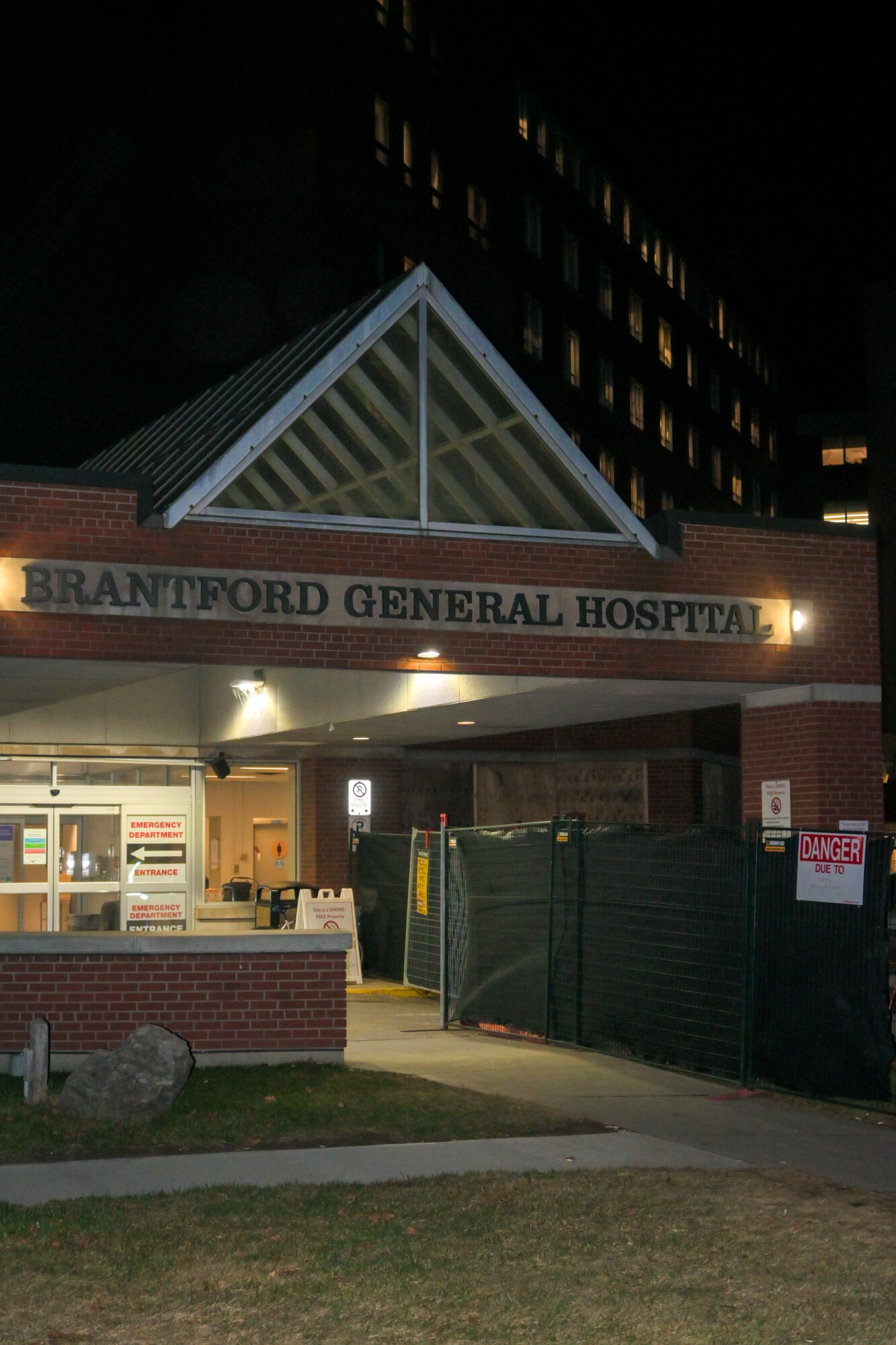Serena Anagbe / Photo Editor
The emergency department at the Brantford General Hospital.
A recent Ontario Health Coalition report says there have been 1,199 hospital service closures in the province alone last year up until November. The report was released in early December as emergency hospital services continue to close across Ontario.
Hospital services have been closing for the past three years due to staff shortages in nurses, health professionals and physicians, which has worsened post-pandemic. The multiple closures also raised concerns about access to public healthcare systems.
“In [northern Ontario], the distances between hospitals that are experiencing service closures are huge. Some hospitals have had services closed when they are an hour to four hours away from the next open service,” said Natalie Mehra, the executive director of the Ontario Health Coalition. “The hospitals to which patients must drive — or to which they must somehow find transportation when their local hospital services are closed — are already overburdened and understaffed.”
The report says there were closures in 867 temporary emergency departments, 316 urgent care centres, 11 obstetrics units, two outpatient laboratories, one ICU, one permanent emergency department and one labour and delivery unit.
Hospital funding in Ontario is increasing by 0.5 per cent, but public healthcare inflation increased by 5.65 per cent in 2023. This leads hospitals to reduce their staff sizes and services.
Several hospitals across the province are at risk of permanently losing services.
Leader of the Official Opposition NDP Marit Stiles said the Ontario party “will keep fighting for a system that truly works for everyone – not just wealthy insiders.” Stiles said her goal is to put more focus on public healthcare.
Last spring, the Ontario Medical Association released a new solution to address the public healthcare crisis, adding to their Prescription for Ontario series. The foundation of this plan is based on three goals, which are to make sure everyone has access to a family doctor, address “the growing burden of unnecessary administration” and increase community capacity to deal with hospital overcrowding. Currently, 2.2 million people in Ontario do not have a family doctor.
This report also says the highest-priority solutions for the Ontario government should include expanding access to team-based primary care for all citizens when and wherever they need it, along with building a northern and rural physician workforce strategy by licensing more internationally educated physicians.




